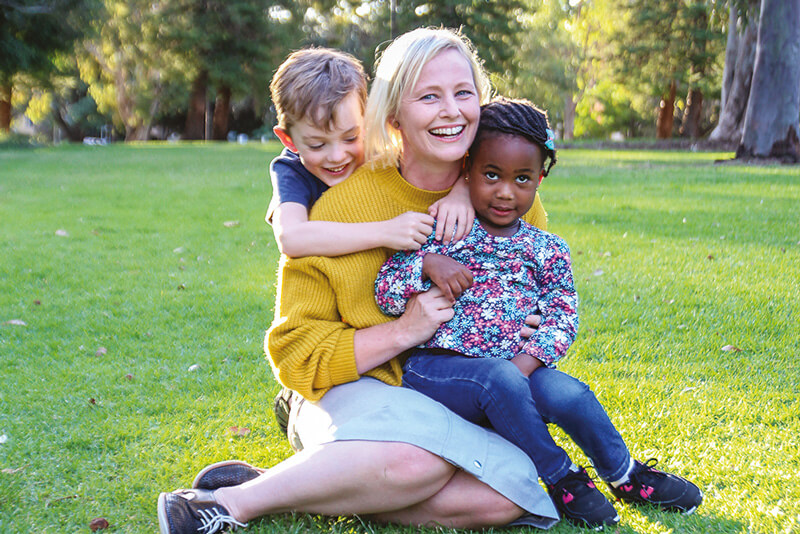
Dr Shannon Simpson with Kaedin and Toni who were both born premmie.
A lung function study carried out by Dr Shannon Simpson provided the most comprehensive follow-up of very pre-term children of any study so far carried out on the lung health of this vulnerable group.
Researchers used four different kinds of lung function tests to follow children as they grow, for the first time combining them with CT scans to provide imaging of the chest.
The scans enabled researchers to spot abnormalities, including those suggestive of an inflammatory process which could be an active lung disease. Children who showed these changes had more decline in function than those without such changes.
“This is a really important finding because it might open up an avenue for us to be able to treat these children and stop the lung disease where it is,” Dr Simpson said.
She said the findings also made an argument for coordinated lung health follow-up after leaving the NICU – not currently clinical practice.
“The intensive care time is so intense and once the babies are well enough to leave the NICU there’s an assumption that they just keep on improving,” Dr Simpson said.
“There’s a lack of coordinated approach to long-term respiratory follow-up and that’s a problem – we’re being a bit complacent.
“It might just be useful for kids to have their lung function tested when they are six years old to try and get some kind of baseline, or have some regular follow-up so we can further understand why these kids are declining and at what point we need to do something about it.”
She said it was also important to let families of preterm babies know that smoking around their children may have long-term lung health outcomes. This was true for all kids, but especially this vulnerable group.
The study has added to what is currently a very modest body of evidence around the ongoing lung health of babies who survived very early birth.
“The kids we are looking at now are in some ways history-makers,” Dr Simpson said. “It’s really only been the last 25 years that babies born so early have been able to survive, and that’s thanks to modern treatments that started to become available in the 1990s.
“But that also means we don’t know an awful lot about their long-term trajectories, especially in relation to lung health. There hasn’t really been a lot of long-term follow- up of survivors of very preterm birth.
“This research has given us valuable information and offers us the opportunity to intervene earlier to make sure these kids grow up with healthier lungs.”
It has also laid the groundwork for further research looking at how the children in the study fare as they grow older, and whether doctors can learn how to predict which babies are likely to have problems.
“At the moment we just can’t predict in the NICU which of these kids are going to go on to live absolutely normal, happy, productive lives and which ones are going to go on to have health issues – be that neurodevelopmental, lung or other issues,” Dr Simpson said.
“We have now secured funding to answer these questions as well as to try and discover a tool that will predict what’s going on and whether we can make that prediction earlier in life.”
Related: Premmie Twins Defy The Odds
